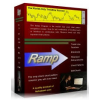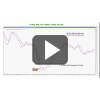Latest Trader Channel Posts
Back Testing Process- Discretionary vs Systematic
Dear all,
I've been in touch with Kevin and emailed the following (below) to him. Kevin kindly asked me to post it on this page as others may be interested too. I would appreciate your input.
"Hello Kevin,
Been a while. How are you keeping?
My email today regards a question I may have asked in the past- back testing. However, I wanted to know how you would go about back testing a more discretionary strategy? It's a lot easier to test a systematic trading strategy using a software or excel but how about discretionary? In the FX front there is a software called Forex Tester of you've ever heard of this?
This is a duplicate of mt4 in my opinion with the added benefit of being able to replay bar by bar and actually "execute trades" to see how a strategy would stand against time.
It does mean though, one must compile a strategy that is mechanical in the sense, entries, exits, sl and tp are well defined, but one can use support and resistance on the charts as a discretionary element.
Now the problem with this is support and resistance is not uniform. Each individual may have a different interpretation of this concept may draw differently. Also, one must aim to be consistent- how would this be possible is the question?
Also, what do you consider a good return in trading? People measure relative to some benchmark but as traders, our aim is surely to be consistently profitable net positive as opposed to just beating the benchmark. I say this because there may be occasions where the benchmark has negative returns, lose money- we as traders wouldn't want to beat them by getting a less negative outcome, we'd rather have a positive.
I'd be interested in your views on both these conflicting thoughts I am having at the moment.
Many thanks,
Shyam Vyas"
Once again thank you for your input in advance.











Answers
Hello Shyam,
Many thanks for your question.
Backtesting a discretionary system is fraught with difficulty. The main problem being...............us as human beings. Unfortunately, the vast majority of us suffer from confirmation bias, i.e. a tendency to look for information that confirms our pre-existing beliefs and ignore information that contradicts them. Studying price charts is a classic example of confirmation bias. Look how many 'obvious' trading signals we see on nearly every price chart and how many potentially winning trades we've missed.
A little while ago, a colleague and I were discussing one of the classic chart patterns, the island reversal. When the island reversal jumps out at us on a price chart, it is almost always at the very top, or very bottom, of a strong move. It is clear that this is an incredibly reliable pattern and should be traded every time it is identified in real time. Unfortunately, mechanical back-testing provides us with a different scenario, i.e. we hardly every notice the island reversal pattern when it hasn't been followed by a steep price retracement. In reality, pairs of gaps in the middle of trends are quite common and we would have lost money trading the island reversal on most occasions.
I am familiar with Forex Tester but I am unconvinced of the usefulness of 'stepping through' historical price charts. In my opinion, we don't learn anything, largely because of our confirmation bias, but far more pertinent is that, because we don't have any money on the line as the price action is unfolding, we are detached from the emotional involvement that is present when we are watching price action while we have money in the market.
As you quite rightly point out, support and resistance is largely subjective and, once again, jumps right out at us on a historical chart. However, try trading a trendline reversal as the price is barrelling towards where you think it's going to be in real time!
As as far as realistic expectations of a return on our treading capital is concerned, there have been couple of recent discussion regarding just that:
/ask-the-trader/it-really-possible-turn-500-4000-six-months-trading-forex
ask-the-trader/it-really-possible-work-full-time-and-make-money-trading-your-own-account
As you can see, the average Hedge Fund is currently returning less than 5% per annum and many investors are perfectly satisfied with that.
However, if you have a strategy that is working for you CONSISTENTLY, then it is simply a case of leveraging your positions with options or other derivatives and you should do a whole lot better overall.
I hope it helps.